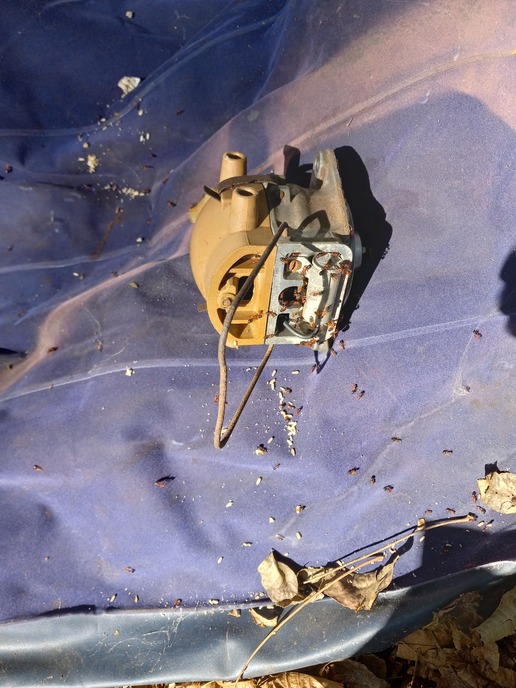deanostoybox
Member
A couple of months ago I posted a question about a voltage regulator that required tapping from time to time to keep it going.
https://www.yesterdaystractors.com/cgi-bin/viewit.cgi?bd=nboard&th=1085745
In that thread Btzj02 was on the right track, low quality part. Later that day I drove that tractor to the farm and back and the charging system worked perfectly the whole trip. I continued plowing roots in the back yard for the next couple of days, but if I was not watching the ammeter, it would run the battery down and I would have to jump it to get it started.
Had some problems, computer failed, after getting a backhoe to dig up the stump and had a pile of dirt blocking the drive into the shop my truck blew a head gasket and I had to get into high gear on the tree stump so I could get the truck in to fix it. Got truck fixed, replaced computer, things started getting back to normal about a month later.
In the mean time I had the VR that was on the 52 8N when it got here on my desk. The tappy one was from the shelf, brand new, never been used, and I had put it on as the original one did not work at all. I had poked around in the original regulator with a meter and determined that the problem was the rusty rivets not conducting.
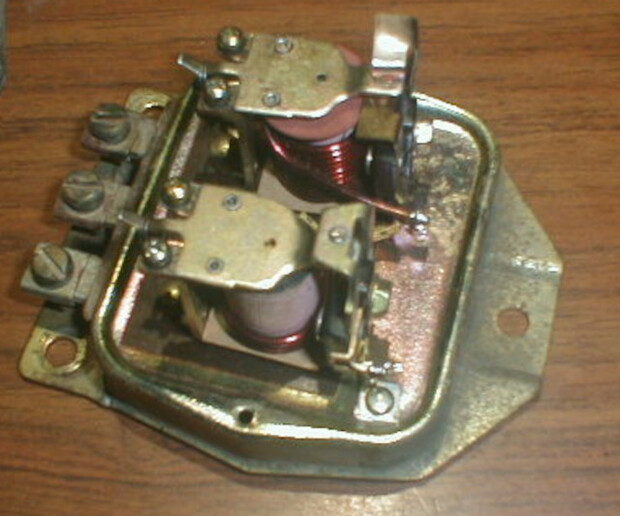
Here is the regulator with the cover removed. You can see the coating is bright and shiny under the cover, but heavily oxidized on the outside where it had been exposed to the atmosphere for 30+ years.
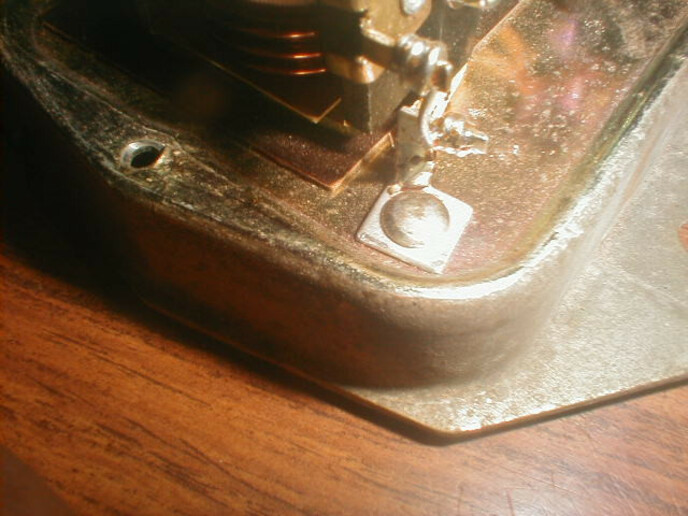
This rivet supplies ground to the voltage coils and the vibrating voltage regulator relay. Fine on top but no connection to ground.
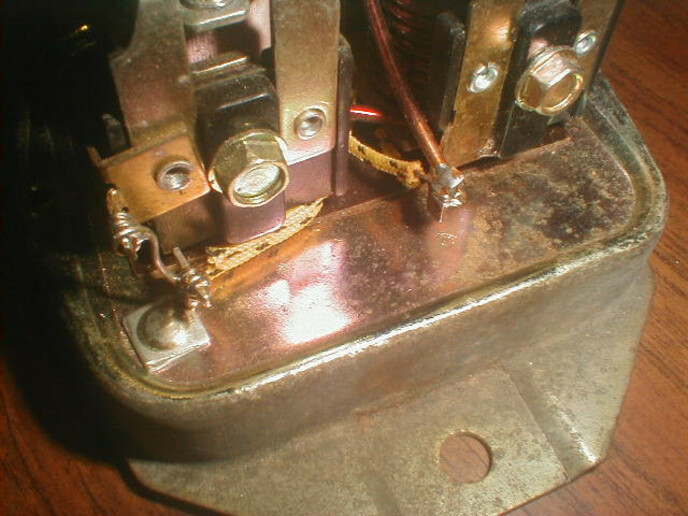
Here is a better view of conductive coating vs corroded non-conductive coating.
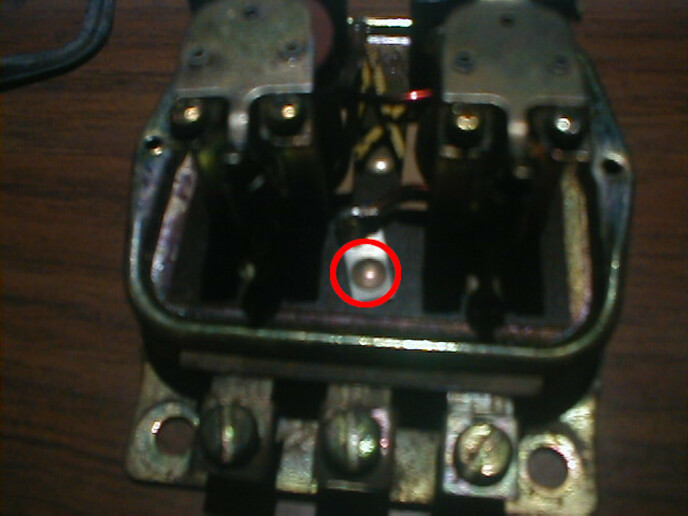
The circled rivet is copper plated and provides the current path from the armature terminal to the current coils. No conductivity at all.
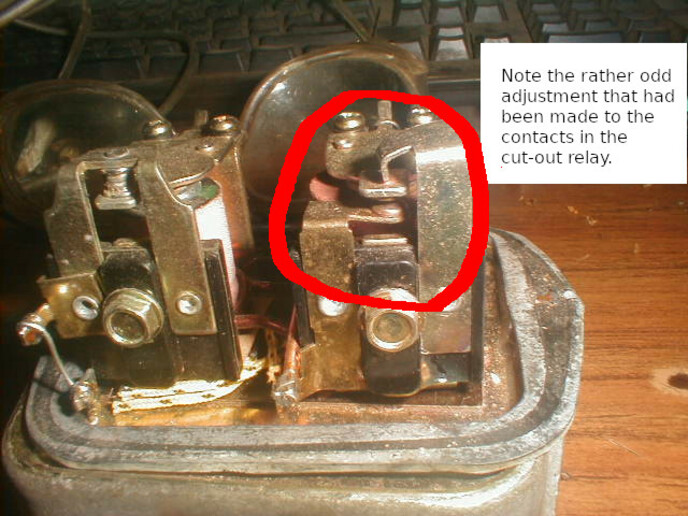
I have never seen the sationary contact bent down like that, but I did not touch and it turns out the cut-out relay works perfectly.
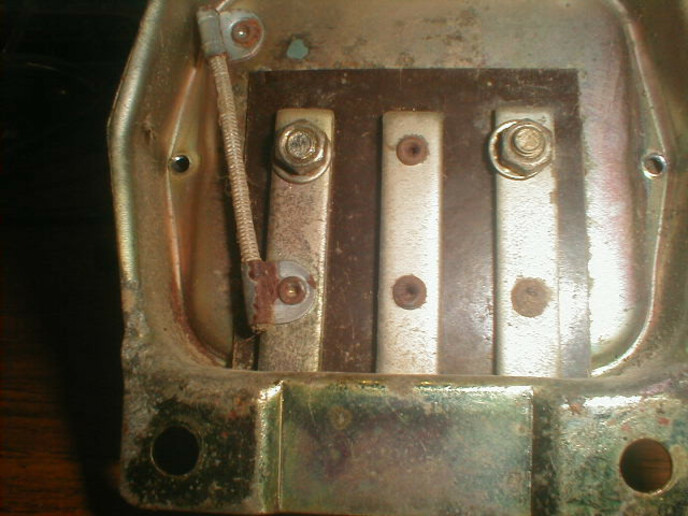
Bottom view of regulator showing rusty rivets. Resistor reads good from the terminals but not between the rivets (note the shiny spots in center of rivets where cleaned with small drill bit so as to make places to put meter leads).
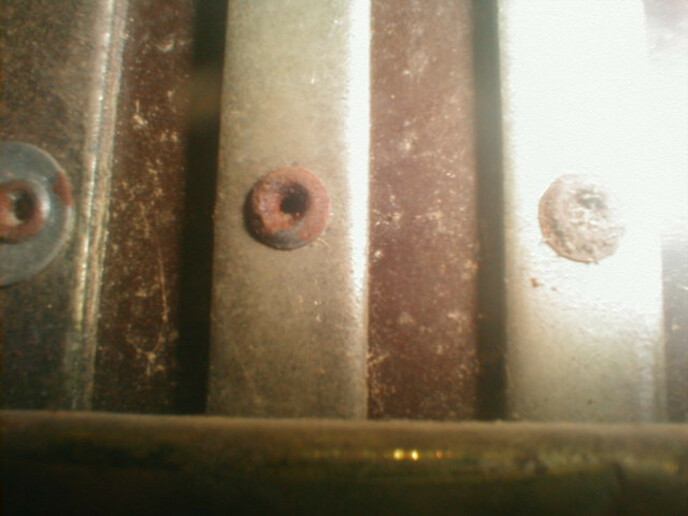
Close up of rusty rivets. Center is the copper plated rivet circled in the dark picture above. The one on the right does nothing but hold the terminal bar in place. Also if you look at the field terminal bar on the left you can see how corroded it is, no conductivity at all.
At this point I drilled out the rivets and removed the nuts from the relays rendering the regulator disassembled. I removed the corroded zinc-chromate coating and tinned with solder to provide some corrosion resistance and to provide a conductive coating.
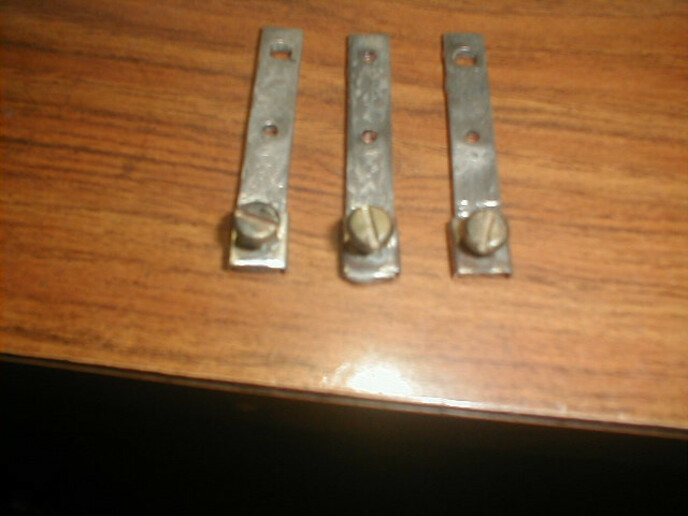
Terminal bars after tinning
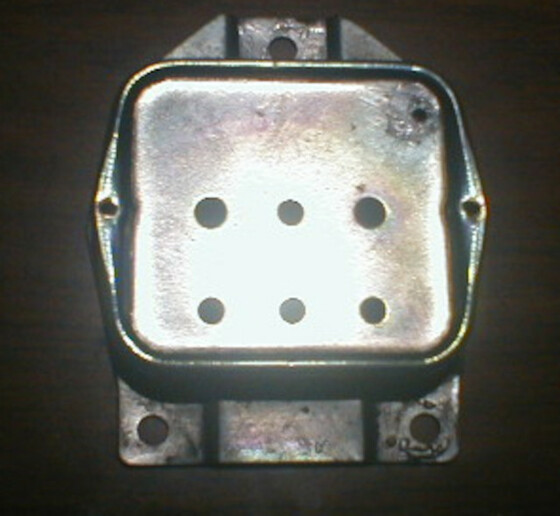
All three mounting holes and ground rivet hole after removing coating and tinning with solder (both sides, top and bottom).
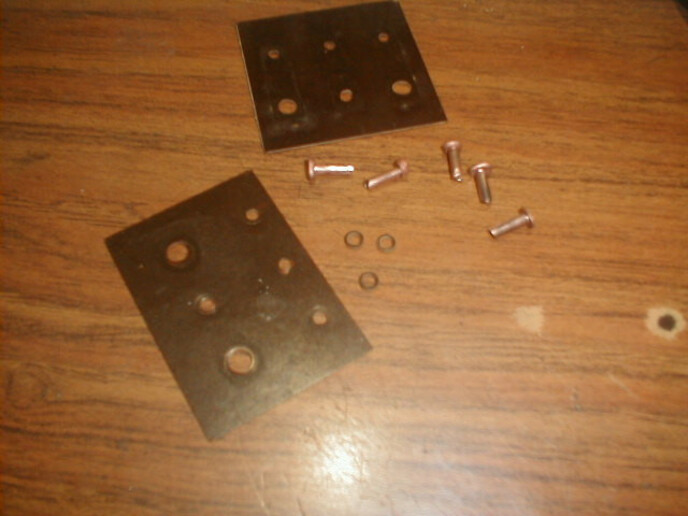
Made some copper rivets from #8 AWG bare solid copper wire.
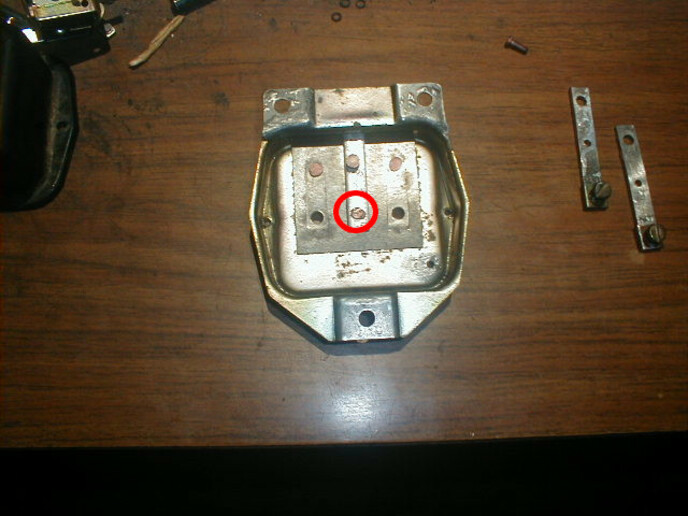
This rivet had to be installed first as if the relays were in place the wires would be in the way to set the rivet. The three rivets at the top were dropped in place from the bottom to hold things in alignment.
After the regulator had been reassembled I mounted it on the tractor and started it up. IT WORKED! A couple of tweaks to lower the regulator voltage so it stabilizes at 7.2-7.3 Volts at 5 Amps, and I now have a properly working regulator.
As to the tappy regulator, I think I might try soldering the grounding rivet after cleaning off the rust to see if maybe that is the problem there as I was able to determine that it is losing ground internally. Won't be anytime soon, however.
https://www.yesterdaystractors.com/cgi-bin/viewit.cgi?bd=nboard&th=1085745
In that thread Btzj02 was on the right track, low quality part. Later that day I drove that tractor to the farm and back and the charging system worked perfectly the whole trip. I continued plowing roots in the back yard for the next couple of days, but if I was not watching the ammeter, it would run the battery down and I would have to jump it to get it started.
Had some problems, computer failed, after getting a backhoe to dig up the stump and had a pile of dirt blocking the drive into the shop my truck blew a head gasket and I had to get into high gear on the tree stump so I could get the truck in to fix it. Got truck fixed, replaced computer, things started getting back to normal about a month later.
In the mean time I had the VR that was on the 52 8N when it got here on my desk. The tappy one was from the shelf, brand new, never been used, and I had put it on as the original one did not work at all. I had poked around in the original regulator with a meter and determined that the problem was the rusty rivets not conducting.

Here is the regulator with the cover removed. You can see the coating is bright and shiny under the cover, but heavily oxidized on the outside where it had been exposed to the atmosphere for 30+ years.

This rivet supplies ground to the voltage coils and the vibrating voltage regulator relay. Fine on top but no connection to ground.

Here is a better view of conductive coating vs corroded non-conductive coating.

The circled rivet is copper plated and provides the current path from the armature terminal to the current coils. No conductivity at all.

I have never seen the sationary contact bent down like that, but I did not touch and it turns out the cut-out relay works perfectly.

Bottom view of regulator showing rusty rivets. Resistor reads good from the terminals but not between the rivets (note the shiny spots in center of rivets where cleaned with small drill bit so as to make places to put meter leads).

Close up of rusty rivets. Center is the copper plated rivet circled in the dark picture above. The one on the right does nothing but hold the terminal bar in place. Also if you look at the field terminal bar on the left you can see how corroded it is, no conductivity at all.
At this point I drilled out the rivets and removed the nuts from the relays rendering the regulator disassembled. I removed the corroded zinc-chromate coating and tinned with solder to provide some corrosion resistance and to provide a conductive coating.

Terminal bars after tinning

All three mounting holes and ground rivet hole after removing coating and tinning with solder (both sides, top and bottom).

Made some copper rivets from #8 AWG bare solid copper wire.

This rivet had to be installed first as if the relays were in place the wires would be in the way to set the rivet. The three rivets at the top were dropped in place from the bottom to hold things in alignment.
After the regulator had been reassembled I mounted it on the tractor and started it up. IT WORKED! A couple of tweaks to lower the regulator voltage so it stabilizes at 7.2-7.3 Volts at 5 Amps, and I now have a properly working regulator.
As to the tappy regulator, I think I might try soldering the grounding rivet after cleaning off the rust to see if maybe that is the problem there as I was able to determine that it is losing ground internally. Won't be anytime soon, however.



